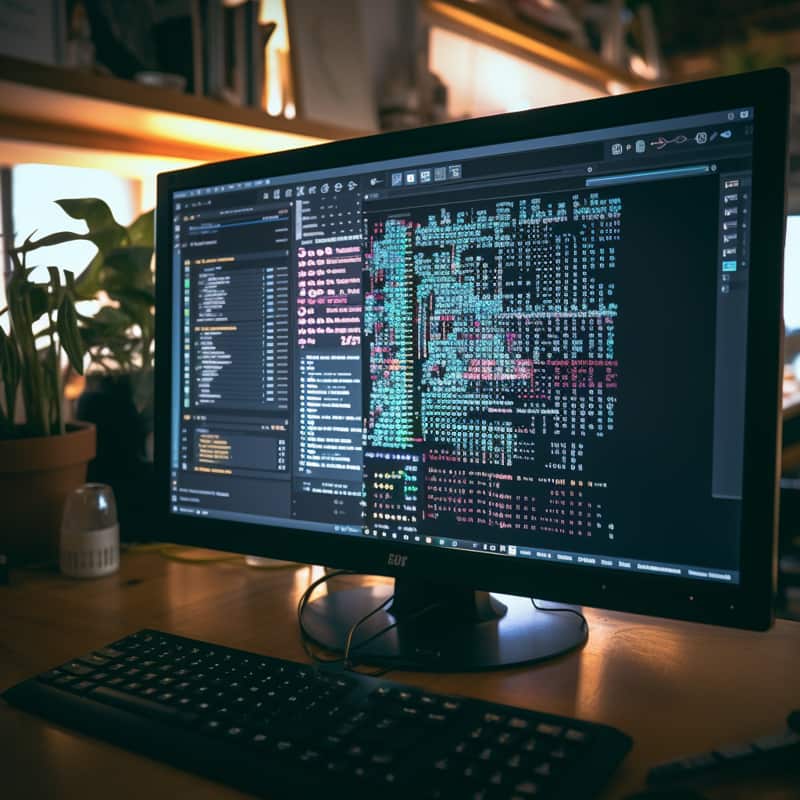Design Patterns Interview Questions | Design Patterns Net Interview Questions
Design patterns are proven solutions for common software design issues that have proven themselves effective and efficient, which make them key components in developing robust and scalable apps.
When interviewing software candidates, design patterns often make an appearance.
These are some common design patterns interview questions and design patterns net interview questions and answers for interview purposes.
Recognizing and applying them will enable you to produce software which is efficient, scalable, and maintainable.

1. What is the two-step approach for comprehending complicated systems?
The two-step approach for understanding complex systems involves identifying the entity and putting them into a classification, which is called abstraction.
This identifying of the entity is done by the thing we all learn, which is object or programming.
When given a requirement, humans typically ask questions about the nouns, things, and requirements, such as customer, products, discount, and delivery. They then start classifying them.
2. What is object programming?
Object programming involves the planning phase, thinking from a 30,000 feet level, and identifying entities and their classifications.
By thinking abstractly and focusing on the top level, developers can create a well-structured and efficient system that meets the needs of their customers.
3. What is abstraction in object programming?
Abstraction in object programming is not abstract classes, but rather a thought process that helps identify the important things needed for an entity.
It involves identifying the entity and putting them into a classification, which is called abstraction.
This identifying of the entity is done by the thing we all learn, which is object or programming.
4. What is the importance of understanding the philosophy of architecting and its application in designing complex systems?
By following the philosophy of architecting, developers and architects can better understand and classify complex systems, ultimately leading to better outcomes for their clients.
Understanding the philosophy of architecting helps ensure that the classification is correct, which is important for ensuring that the system is efficient and meets the needs of the client.
5. What is the process of writing code for an abstraction?
The process of writing code for an abstraction involves reading the requirement, clearing the interface, and then starting the implementation phase.
6. In object-oriented programming, why is encapsulation used?
Encapsulation is necessary to make private and ensure that the user can access the necessary properties and data without violating the abstraction.
It also hides unnecessary elements and allows for decoupling between different types of customers.
7. What is polymer fissile in object-oriented programming?
Polymer fissile is a feature that allows customers to take various shapes on runtime, such as normal, discounted, inquiry, defaulted, or any other type of customer.
This feature allows for decoupling between different types of customers, such as normal, discounted, inquiry, defaulted, and more.
8. How can the user view the customer’s behaviour at runtime?
The user can view the customer’s behaviour at runtime by using the polymer fissile feature, which allows the user to view the customer’s behaviour regardless of whether it is a normal customer, discounted customer, inquiry customer, defaulted customer, or any other type.
9. To what end does object-oriented programming’s planning phase serve?
The planning phase of object-oriented programming involves identifying the entity, classifying it, and writing the implementation to hide unnecessary elements.
It is important for developers to follow abstraction by using access modifiers to hide unnecessary elements.
10. How does object-oriented programming help developers understand and adhere to the abstraction of their code?
Object-oriented programming is a powerful tool for developers to understand and adhere to the abstraction of their code.
By using polymer fissile features, developers can achieve decoupling and maintain a consistent interface across different types of customers.
11. What is polymer fissile?
Polymer fissile is a concept in software development that allows for a more abstract and efficient approach to designing interfaces.
This abstraction allows for the creation of generic interfaces without the need to know the specific type.
12. To what extent does software development rely on abstraction?
Abstraction is essential in software development as it allows for the creation of generic interfaces without the need to know the specific type.
This abstraction promotes proper decoupling between different types of interfaces, making the system more flexible and efficient.
13. What is inheritance, aggregation, composition, and association?
Inheritance is a relationship between a subclass and its superclass, where the subclass inherits properties and methods from the superclass.
Aggregation is a connection between an object and its instance, where the object is used without any instance stored inside it.
Composition is a similar concept to aggregation, but the object is stored inside the instance.
Association is a connection between an object and its instance, where the object is used without any instance stored inside it.
14. Can you explain the distinction between polymer fissile runtime and compile time?
Compile time and runtime polymer fissile are technical internal aspects of an object’s ability to change and take different shapes.
Compile time polymer fissile is set by developers at compile time, allowing objects to point towards specific points and numbers.
Runtime polymer fissile, on the other hand, is set at runtime, allowing objects to change their shape and behaviour dynamically.
15. What is the goal of polymer fissile in programming?
The goal of polymer fissile in programming is to decouple objects, allowing them to change themselves and communicate what is needed.
This enables customers to point towards specific points and numbers, making it easier to understand complex systems through abstraction, classification, and entity identification.
16. What is the difference between generic polymer fission, static polymer fission, and compile time polymer fissile?
Generic polymer fission is a more general term that encompasses static polymer fission and compile time polymer fissile.
Static polymer fission refers to the use of compile time polymer fissile, which is set at compile time and allows objects to point towards specific points and numbers.
Compile time polymer fissile is a technical internal aspect of an object’s ability to change and take different shapes, and it is set by developers at compile time.
17. What is association composition, and how is it different from aggregation composition?
Association composition refers to a situation where there are no instance references, and both classes either live together or die together.
It is exclusive to each other, while aggregation composition allows objects to have associations with each other but not necessarily die together.
In aggregation composition, there is no exclusivity between the classes.
18. What is the role of abstraction in decoupling?
Abstraction is an essential part of decoupling in programming.
It involves using public, private, and protected methods to respect abstraction and avoid issues like dark quacks.
Abstraction enables developers to understand complex systems through abstraction, classification, and entity identification, making it easier to design reusable and extensible software.
19. What are interfaces in Java?
Interfaces are contracts that specify the capabilities that should provide.
They are used to define a set of methods and properties that must implement.
Interfaces are one of the most misunderstood constructs in Java and many other programming languages.
20. What is “annotate” in Java?
“Annotate” is an annotation that can be used in Java to ensure that a method with the specified signature.
It can be used to specify the name of the method, the number of parameters, and their types.
21. What is the principle of hiding implementation details?
The principle of hiding implementation details is applied to simplify the interface and make it easier to use.
This is done private, which hides the implementation details from the consumers.
22. What is inheritance in object-granted programming?
Inheritance is a principle of object-granted programming that allows for reusing code across classes.
Inheritance allows us to implement common behaviors in a parent or base, reducing code duplication.

Design Patterns Training

23. What is URLML?
URLML is a graphical notation used to represent classes and their relationships in a Java framework.
URLML represents classes as rectangles with a name, fields, and methods.
24. What is the composition relationship?
The composition relationship is a type of relationship between classes in which one class has a relationship with another class that it does not depend on for its existence.
25. What is the dependency relationship?
The dependency relationship is a type of relationship between classes in which one class depends on another class for its existence or functionality.
26. What is the goal of the moment of pattern in software?
The goal of the moment of pattern in software is to implement undo mechanisms that allow users to revert changes made to the state of an object.
27. What is the originator in the moment of pattern?
The originator in the moment of pattern that manages the state of the object and provides necessary features. In this case, the originator is the editor.
28. How are push and pop different from one another?
Push adds an item to the end of the list, while pop removes the last item from the list.
29. Could you please explain the use of the undo button?
The undo mechanism is used to revert the state of the editor to the previous state.
30. Why is the canvas now using the State field?
The current State field in the canvas is used to keep track of the currently selected tool.
31. Can you explain how the Type field works on the canvas?
The tool Type field in the canvas is used to determine the currently selected tool.
32. In this canvas, what does the gutter field serve to do?
The gutter field in the canvas is used to determine the currently selected tool.
33. What is the mechanism behind the mouse-down approach to the canvas?
The mouse down method in the canvasis used to change the icon of the cursor depending on the currently selected tool.

34. What does the canvas’s mouse-up procedure serve to accomplish?
The mouse up method in the canvasis used to execute the moment of pattern.
35. What is the draw UI control method is used for?
The draw UI control method is used to take on different forms depending on the object type passed to the method, allowing for polymorphism.
36. What is the aim of the abstract tool?
The abstract tool is used to give the canvas the ability to behave differently depending on the specific tool given at runtime, implementing the state pattern.
37. What is the key requirement in object-oriented programming?
The key requirement in object-oriented programming is polymorphism, a mechanism that allows an object to take on many different forms.
38. What is the tool interface used for?
The tool interface is used to represent specific tools, such as the selection tool and brush tool. It allows for more maintainability and easy extension.
39. What kind of logic is delegated by the canvas?
The canvas delegates the logic to determine what should happen when the user presses or releases the mouse button, reducing the number of decision- making statements in the application and making it more maintainable.
40. How does the new tool work with the canvas?
The canvascan be extended by creating a canvas object and passing an object that implements the tool interface.
For example, the selection tool can change the icon to the selection icon and draw a dashed rectangle when the user presses the mouse button.
41. What is the open close principle?
The open close principle is a crucial principle in object-oriented programming that means that our classes should be open for extension but closed for modification.
This allows us to add new functionality without changing the existing code and support new functions by adding new classes.
42. In object-oriented programming, why are design patterns used?
The purpose of design patterns in object-oriented programming is to build, maintain, extensible, and reusable objects.
43. Why is the canvas refactored using the state pattern?
The canvas is refactored using the state pattern because it had decision-making statements in multiple places, which led to maintainability and extensibility issues.
44. What are the ultimate design patterns used for?
The ultimate design patterns is to provide software engineers with a comprehensive understanding of essential design patterns and their applications.

Design Patterns Online Training

45. What is the stop state in Java?
The stop state in Java is a complex implementation that has two state classes and a private field.
46. How can the state of the stopwatch be changed in Java?
To change the state of the stopwatch in Java, we can use the generate palette on Mac or Windows.
47. What is the click method in Java?
The click method in Java is used to change the state of the stopwatch.
48. What is the role of the current state dot click in the click method in Java?
In the click method in Java, the current state dot click is used to delegate the task of clicking the stopwatch to the state object.
49. Why is the canvas refactored using the state pattern?
The canvas is refactored using the state pattern because it had decision-making statements in multiple places, which led to maintainability and extensibility issues.
50. What is the state pattern in Java?
The state pattern in Java is a behavioral design pattern that enables an object to change its behavior when its internal state changes.

Its time for to check on MCQ’s
1. What is the two-step process for understanding complex systems?
a. Classifying the object after identifying it
b. Making a method without a matching field
c. Data rules as well as method access rules
d. Establishing guidelines for disclosure of data and methods
2. Encapsulation and abstraction are two concepts in object-oriented programming; how are they different?
a. Encapsulation occurs during planning, whereas abstraction occurs after implementation
b. Encapsulation refers to the idea of hiding superfluous pieces, while abstraction allows consumers to assume numerous shapes on runtime
c. Using the amount valid function before calculating the discount is an abstraction feature, and encapsulation is the idea of making a class public
d. The idea of encapsulation is to hide superfluous pieces, while abstraction is a feature that lets the user examine the customer’s behavior at runtime
3. Why is it critical in object programming to be able to recognize entities and categorize them?
a. Regulate data and method visibility
b. Methods should be created without fields
c. Control data and method access
d. Maintain data integrity
4. What should developers do when addressing a requirement?
a. Think abstractly and focus on the top level of the system
b. Build a method without a related field
c. Make sure that data and methods may be accessed accordingly
d. Implement data and method visibility rules
5. What is abstraction in object-oriented programming?
a. Setting data and method access rules
b. Make methods that do not contain any fields
c. Simplify complex systems by removing unnecessary details
d. Rules for data and method visibility
6. What should developers do when writing code for an abstraction?
a. Implement access policies for both the data and the methods
b. Develop a method without a related field
c. Review requirements and clear interface before implementation
d. Define visibility rules for data and methods
7. What is encapsulation in object-oriented programming?
a. Identify, classify, and construct the entity to hide unnecessary elements.
b. Method creation without a related field
c. Establishing data and method access rules
d. Specifying data and method visibility rules
8. What is polymer fissile in object-oriented programming?
a. Configuring data and method access rules
b. Simplifying complex systems by hiding superfluous details
c. Generate methods without fields
d. Objects’ capacity to change
9. What is the main goal of associations in object-oriented programming?
a. Ensure data integrity
b. Make methods that don’t have fields
c. Control data and method access
d. To establish data and method visibility rules
10. What does the moment pattern do?
a. It is a design pattern for polymorphism application
b. Performs inheritance design pattern
c. Implements undo feature
d. This architecture generates abstract classes
11. Why is “Create Project from Template” used?
a. Specify base package name
b. Launch new project
c. Set project name
d. Pick the type of project
12. What is the problem with coupling in Java?
a. It leads to cascading changes
b. modifying the interface
c. expanding a program
d. software reuse and extensibility
13. What is inheritance in object-granted programming?
a. System that enables an item to assume numerous shapes
b. Principle that permits code reusability
c. Method for including rollback features
d. Regular expression that inserts at least one editor state object into a list.
14. What is the editor responsible for in the undo mechanism?
a. state items within a list
b. Maintaining the editor’s present condition
c. Provide administration
d. Preserving at least one editor supplying the features that are required
15. What is the moment of pattern used for?
a. Configuring the undo processes
b. Keeping a list of zero or more editor state objects
c. The application of polymorphism
d. Having the editor in the same situation
16. What is the focus of the state pattern in a drawing application like Photoshop?
a. Identify the presently selected tool
b. Enable object behaviour based on its present state
c. Store 0+ editor state objects in a list
d. Implement polymorphism
Conclusion
Design pattern interview questions are an indispensable component of a programming interview process, testing your ability to apply well-established solutions for common programming challenges.
Understanding and applying design patterns will allow you to improve the quality and maintainability of your code, while practicing design pattern Java interview questions for experience will further develop your problem-solving abilities and become a superior programmer.
No matter your programming level or expertise, it is crucial to be ready for design patterns interview questions and answers for experienced programmers in order to keep learning and honing your craft

Design Patterns Course Price


Deepthi
Author